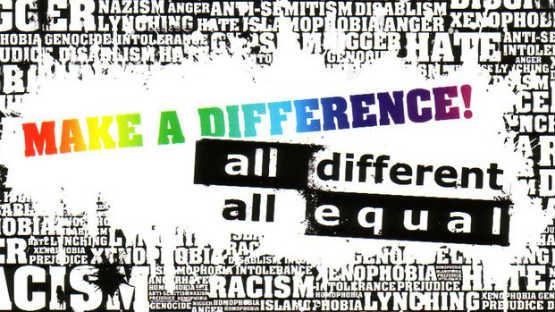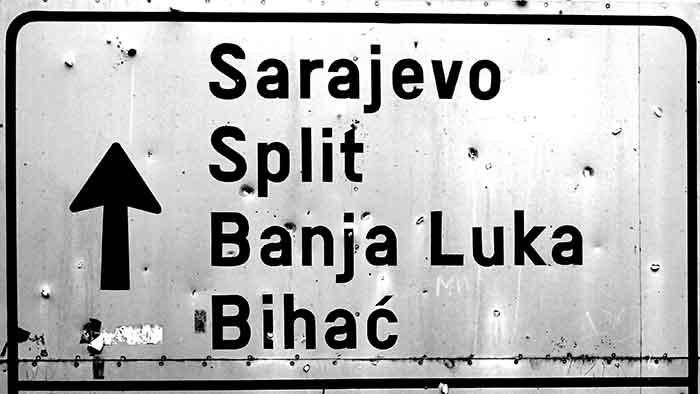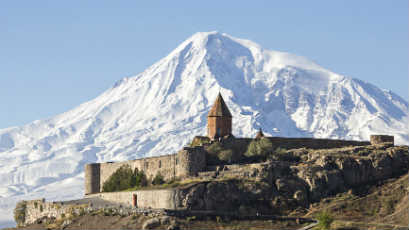Agrégateur de contenus

Racism is
1994
Ulrich Bunjes

The campaign is still in its early phase. It is 1994 and much will be developed over the next two years. The powerful slogan “all different – all equal” and its black and white logo are already available. However, it would be good to also have a video that can be screened everywhere in Europe, bringing the campaign message to the widest possible audience. It would ideally be state of the art but culturally neutral and effective. To assist the Council of Europe, the team of the public broadcaster SWF had had the brilliant idea to organise (and pay for) a Europe-wide anti-racist video contest. Our media partners are now visibly curious to see how the non-journalists react to their pre-selection.
We all know that running an awareness-raising campaign is not exactly the core business of an intergovernmental organisation. The natural risk-aversion attitude of a diplomatic body, the invariably slow decision-making processes, the multitude of languages and cultures to be negotiated, and the bureaucratic obligations are quite enough to cripple a campaign. But on top of all that, the youth campaign, announced in the “Declaration on combating Racism, Xenophobia, Anti-Semitism and Intolerance” adopted at the Vienna Summit in October 1993, has to work on a shoestring budget. External support, in this case from a broadcaster, is more than welcome; it is absolutely essential.
The first video hits the screen. Music wells up, we see the European flag, a demonstration, slogans, banners against racism. The message is: intolerance is bad, we are good. Not badly done. Maybe a bit amateurish, but well-meaning.
After a short exchange, and some background facts from the journalists, we look at the second video. Young kids in school or kindergarten, black and white and every shade in between, happy together. The message is: a life without racism is possible and desirable. Again, a short exchange of views then the screening continues.
My mind starts to drift back to the initial discussions in the campaign steering group. The youth representatives (of which I had been one not too long before) did not need any encouragement. For them, intolerance against minorities has been a daily experience. They are fully behind a strong human rights agenda. The growing wave of racist and xenophobic incidents in the new Europe of the early nineties is fuelling their scorn — and their engagement. The campaign is their vehicle to move forward, to change things for the better, to immunize Europe against the spectres of its past, hatred and violence.
However, the challenge of every campaign, unless it has a very operational short-term aim, is to reach out to the uncommitted, the uninitiated and the unconvinced. Giving young people the tools to engage and educate their peers is a marvellous approach. It adds credibility and ownership to a campaign, which an intergovernmental organisation alone could not even hope to attain on its own. And videos, almost by definition, are a youthful media.
We are by now looking at the fifth or sixth entry. There is a certain amount of repetition involved. The messages are either that racism is negative and dangerous, or that tolerance is positive and good. The imagery follows the same few patterns: violent incidents, people of different skin colour co-operating or in a conflict situation, hardly ever laughing together. Is that our understanding of racism? So simple? Campaign messages must be simple, ok, but the conflicts presented in the videos are perhaps too foreseeable to be effective. What about antisemitism? Aggressive nationalism? Xenophobic mindsets?
The group needs a break. We share a common view about most of the entries. Some products are visibly amateurish, produced on tiny budgets. How can we ever offer this to television stations around Europe? Others are culture-specific, maybe useful in a given national context, but without lengthy explanations hardly meaningful outside their immediate context. This would be a serious obstacle for a campaign based on national committees which should develop their own programme but are often dependent on material and political help at the European level.
After the break, we see more of the same. I begin to wonder whether today we will ever achieve anything worthwhile. All these films prove is that racism and intolerance are abstract notions, difficult to describe and impossible to depict in a few minutes without resorting to worn-out clichés. This is not what we want. I am convinced that the campaign needs freshness. It needs provocation to be successful. It needs visuals that make you think, not just nod your head.
Daniel and Pepe Danquart are also getting impatient. The experts expect more quality, it seems.
The campaign will not be built around this video, surely not. The two-year project is primarily based on non-formal peer education, which is the approach that youth organisations know best. Governments sometimes have a different approach to campaigns, because they can pay for massive publicity, giveaways and support material for opinion-leaders and multipliers. Not so for the Council of Europe, it seems. We have to work with the little that we have, and hope for the support of member State governments, civil society, private sponsors and the media.
By now we are looking at the ninth entry. And suddenly, it happens: there it is, a potential winner; a really gripping video, showing two canoeists trying desperately to get ahead of each other. At the end, after ever more frantic efforts of the two muscular men, it turns out that they are sitting in the same boat. They are working against each other all the time. Powerful. A good story, well told without too many platitudes even if it is a little on the abstract side. But it is of an impeccable professional quality, shot in a real-nature water environment, and I have the impression that most of us exhale a sigh of relief. This could work!
The fact that racism and intolerance harm the victims and the perpetrators is an interesting message. In a way, it breaks down to the individual level the message that intolerance threatens democratic societies and their fundamental values and undermines “the foundations of European construction”, as mentioned one year earlier in the Vienna Declaration. We all stand to lose if exclusion and hatred are not stopped.
But it is not over yet; some entries are still to come. It must be number ten or eleven, when the scene starts with an everyday situation and with Lee Dorsey singing the smash R&B hit of 1961, “Waiting for my ya ya”. What an opening. What a lovely parade of characters and costumes in an entirely banal stress situation — waiting in front of a closed door. The action is accelerating fast, ending in a whirlwind of icons and colours, until the final slogan appears on the screen against the background of mother Earth. The message is clear and universal: we are one human race, everything else is just la la.
The group laughs out loud. The relief is tangible. Humour is always refreshing, but probably particularly important in this grim context of racism and intolerance. Immediately I feel that this little video, produced by an Austrian team of advertising specialists could indeed bring down barriers of perception which we would not be able to reach with more conventional approaches. I am enthusiastic, and so is Cohn-Bendit.
The others are less convinced. Isn’t this too much of a provocation? Would an intergovernmental organisation and a public broadcasting station not run into ethical difficulties when showing this video? Is it not too banal, compared to the seriousness of racism? Would we get sufficient access to TV stations around Europe? Would we not be on safer ground with the two canoeists?
And so the alternatives are set before us. The discussion is long and earnest. I must admit that the video and its title go somewhat beyond the accepted language used at the Council of Europe. But on the other hand, the freshness, the humour, the visual quality, the positive approach, the surprise factor… We have to fight hard.
In the end, we manage to award the first prize to the Austrian video. The canoeists paddle into second place.
Little do we know at this stage that the winning video will be a smash success. It will be shown at the official opening later that year, much to the delight of all dignitaries and especially the young people present. By the time the campaign ends in mid-1996, it will have been shown in most of the member States in the context of many of the 2500 campaign activities. MTV and other TV stations will have screened it a dozen times, reaching millions of young people.
Was it crucial for the overall success of the campaign? Certainly not. In the end, the campaign was the achievement of thousands of young enthusiastic militants and supportive governments, not of a one-minute video. Racism did not end there, as was proven with the Srebrenica massacre, its monstrous counterpart, which took place one year into the campaign. No, a little video could not prevent a genocide, but perhaps it helped to open doors and minds, to raise awareness.
Incidentally, its title was: “Racism is shit”. Difficult to be more succinct.




